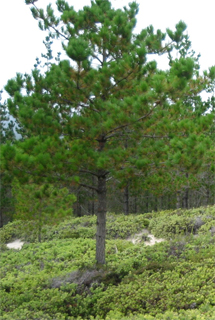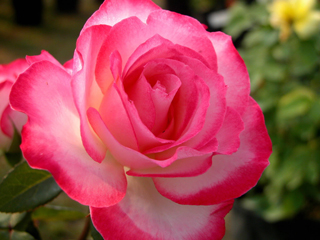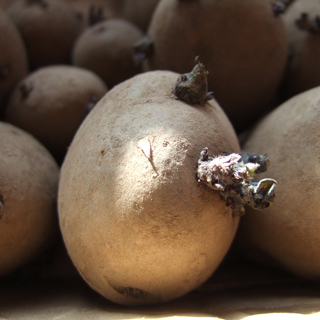 I had to laugh when I picked up last month’s article. I said something about watering in your herbaceous plants. The heavens obviously read the article and did it for you. Oh well, sometimes I have to write well in advance and that can mean things become a bit hit and miss if the weather doesn’t play!
I had to laugh when I picked up last month’s article. I said something about watering in your herbaceous plants. The heavens obviously read the article and did it for you. Oh well, sometimes I have to write well in advance and that can mean things become a bit hit and miss if the weather doesn’t play!
Storm force winds did for one of our poly tunnels and frankly I am surprised we got away so lightly but it just shows, the tiniest tear in the polythene that perhaps you cannot see and the wind does its best. The rest of the garden however survived well. Shallow rooted trees like eucalyptus and pinus radiata have stood up well and I put that down solely to the way I was taught about shelter belts at Duchy College where I trained. When we took on this garden it was just exposed pasture and we planted conifers and pines which we don’t let get too big, laurels, birch and pampas and all planted against the prevailing south and south westerlies and they really have done their job. A good mixture of loose evergreen and deciduous trees filters the wind rather than creating a blank barrier of one hedge or a fence.
 The silver lining in all of this weather is that it hasn’t been really cold. The daffodils have shot up, the camellias are flowering well and all bodes well for the best of Cornish spring gardens as long as we are not hit by Arctic winds like last spring.
The silver lining in all of this weather is that it hasn’t been really cold. The daffodils have shot up, the camellias are flowering well and all bodes well for the best of Cornish spring gardens as long as we are not hit by Arctic winds like last spring.
So what should we be doing out there assuming the climatic conditions are conducive? If they are not just hang on and do these jobs when you can.
- With a few packets of seeds you can grow a whole border of hardy perennials. Each of these will cost you £6 or more as plants and you can have dozens from seed for a few pounds. Lupins, delphiniums, pinks, achillea campanula and hundreds more. Have a go with a few and I bet you will do loads more next year. You will have a beautiful border and flowers for the house too. Plant the seeds in pots or trays; put them in a greenhouse or a window sill. They don’t need much heat. Around 13 degs will get them going. Too high a temperature will force them on and make them weak. Once they are about 2” high pot them on into individual pots until they can be hardened off and planted out.
- One of my favourite plants iscamellias are flowering
 . You will see them flowering away in the spring some even starting this month. They have beautifully graceful blooms and were of course a favourite for that Royal wedding bouquet. But don’t be deceived by their graceful appearance! Plant a crown or two in semi shade and if they like where they are they will become romping thugs spreading far and wide. They can be split every two or three years but make a wonderful carpet around trees or under shrubs. They prefer a well dug soil with plenty of compost or well-rotted manure, plant them now or in September but into a clean patch of ground with all perennial weeds are removed or they will choke them out and be impossible to remove later.
. You will see them flowering away in the spring some even starting this month. They have beautifully graceful blooms and were of course a favourite for that Royal wedding bouquet. But don’t be deceived by their graceful appearance! Plant a crown or two in semi shade and if they like where they are they will become romping thugs spreading far and wide. They can be split every two or three years but make a wonderful carpet around trees or under shrubs. They prefer a well dug soil with plenty of compost or well-rotted manure, plant them now or in September but into a clean patch of ground with all perennial weeds are removed or they will choke them out and be impossible to remove later. - If primroses and polyanthus have flowered now is the time to split them and move them. They dislike hot summer sunshine (that’s that big yellow thing in the sky, remember now?) so make sure they have shade when the sun is higher.
- Snowdrops, winter aconites and hardy cyclamen are best moved or planted now. If you try planting as bulbs they are often dried out so planting whilst there is still green and root growth is ideal.
- Send away for some rooted chrysanthemum cuttings and get some going now. Thy are not difficult to grow but do need some knowledge for the later varieties so if you are just starting out buy early flowering types or some of those’blowsy’mums’ which seem to put up with anything.
- Prune off any faded growth on hebes and heathers. Make a nice shape of the remaining plant so that it isn’t leggy next year.
 Lawns need attention now if you want a green sward for the summer. Thatch can be raked out. This is old grass that has died or been left when you were mowing. Clearing it either by hand or mechanically gives the new growth light air and water and encourages new fresh growth. The rain that we have had will have shown you where the water is collecting on lawns and therefore where drainage is bad. Left without attention you will encourage moss and creeping perennials. If you don’t have access to open tines on a machine then just stick a fork in the lawn, push the tines backwards and forwards and create some air and drainage spaces. Then start on a spring feed to get the lawn into full spring growth.
Lawns need attention now if you want a green sward for the summer. Thatch can be raked out. This is old grass that has died or been left when you were mowing. Clearing it either by hand or mechanically gives the new growth light air and water and encourages new fresh growth. The rain that we have had will have shown you where the water is collecting on lawns and therefore where drainage is bad. Left without attention you will encourage moss and creeping perennials. If you don’t have access to open tines on a machine then just stick a fork in the lawn, push the tines backwards and forwards and create some air and drainage spaces. Then start on a spring feed to get the lawn into full spring growth.- Seed sowing can continue. If the soil is warm enough later this month try some early carrots spring onions, peas and parsnips. The advice I have given before is still relevant. Decide what you want to grow, choose veg that are expensive in the shops (I will be sowing sweet corn I pots in the greenhouse), try some pretty lettuces like lollo rosso. Then look at the back of the seed packet to see when and how it should be planted. For example small seeds like onions and lettuces can be planted in pots or trays and planted out when they are bigger. Most root crops dislike disturbance so prefer to go directly into thes oil outside.
 New potatoes that have new chitted shoots on them can go in now. Cold wet soil is not ideal and you can leave planting until well into April but the crop will be later and you risk blight. There is confusion about trenching and covering and the like. It’s not difficult. Dig a trench put the potatoes in about 18” -2ft apart cover them over. Done! As they start to grow keep covering the new shoots. Potatoes actually grow on the stem, or correctly, haulm, of the plant underground so the more you cover up, the longer the stem and the more crop you achieve.
New potatoes that have new chitted shoots on them can go in now. Cold wet soil is not ideal and you can leave planting until well into April but the crop will be later and you risk blight. There is confusion about trenching and covering and the like. It’s not difficult. Dig a trench put the potatoes in about 18” -2ft apart cover them over. Done! As they start to grow keep covering the new shoots. Potatoes actually grow on the stem, or correctly, haulm, of the plant underground so the more you cover up, the longer the stem and the more crop you achieve.
I absolutely adore this time of year. The garden full of the spring flowers, the seed packets coming out and the real work for summer beginning. Time invested now in your garden and greenhouse will pay dividends.
I’m off to plant my pumpkin in a pot in the tunnel and get a head start this year for the Show!

